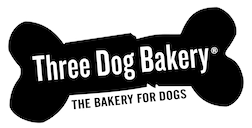Show Me The Love! Can you say ‘cookie?’
 When training your dog with positive reinforcement, it is important always to have treats easily accessible – accessible to you, not to your dog – in order to make it easier to shape and/or capture desired behaviors. I keep a bowl filled with healthy dry treats on the counter at all times to make it easier for mom and dad to train me.
When training your dog with positive reinforcement, it is important always to have treats easily accessible – accessible to you, not to your dog – in order to make it easier to shape and/or capture desired behaviors. I keep a bowl filled with healthy dry treats on the counter at all times to make it easier for mom and dad to train me.
Keep in mind that the more ambitious the command you are training, the higher value the treat must be for your dog. For example, when training a “sit,” healthy dry treats will probably suffice. However, if you’re training your dog to juggle while on a unicycle, you’ll most likely have to spring for some filet mignon with béarnaise sauce.
Are you worried that Bailey will learn to obey only when he knows you have treats? Have you not heard of Pavlov’s dogs? In case you’ve just surfaced from the rock under which you’ve lived until now, let me explain it to you. Ivan Pavlov was a Russian physiologist born in 1849 and best known for his work in conditioning.
It’s basically an association. When training, every time we listen to you, you praise us, and we receive a treat.
In time, we will associate listening to you with receiving a treat (positive reinforcement). Even when there is no edible or non-edible reinforcement forthcoming, the expectation of it will be enough to motivate us to obey. The association itself will become the positive reinforcement.
Pavlov demonstrated this in 1902 upon realizing that certain behaviors are hard-wired in dogs. For example, salivating when they see food. In fact, he noticed that the dogs in his experiment would also salivate by the mere sight of him entering the room, even when he entered without food, as he was the one who fed them. This is referred to as an unconditioned response.

Pavlov quickly understood that the dogs in his lab had learned to associate food with his lab assistant, as well. This was obviously a learned behavior because, in the beginning, the dogs did not make that association – the assistant was initially a neutral stimulus, that is, he received no salivating response from the dogs. This type of change in behavior could only result from learning. What had occurred was that the neutral stimulus (assistant) had become associated with an unconditioned stimulus (salivating).
Pavlov then discovered that any object which the dogs learned to associate with food (positive reinforcement) would trigger salivating.
He continued testing this theory by using a bell, instead of his assistant, as the neutral stimulus. He would feed the dogs and ring the bell at the same time. After a few repetitions, he rang the bell, without feeding the dogs. Just as he expected, the bell had become an unconditioned stimulus and hearing it caused the dogs to salivate.
Yes, the dogs had learned to associate the bell with food. This method of learning is called a conditioned response. He further discovered that, in order for this method of learning to occur, the two stimuli (bell ringing and food) had to be presented close together in time. If the time between the conditioned stimulus (bell ringing) and the unconditioned stimulus (food) is too long, learning will not occur. (This is why dispensing treats and praise immediately while training is imperative.)
Pavlov soon realized that he had made an important discovery and decided to devote the rest of his career to studying this type of learning. (Thank you, Mr. Pavlov.) So, the next time you’re worried that training your dog with treats will not translate into treat- less compliance, remember Pavlov’s dogs.
